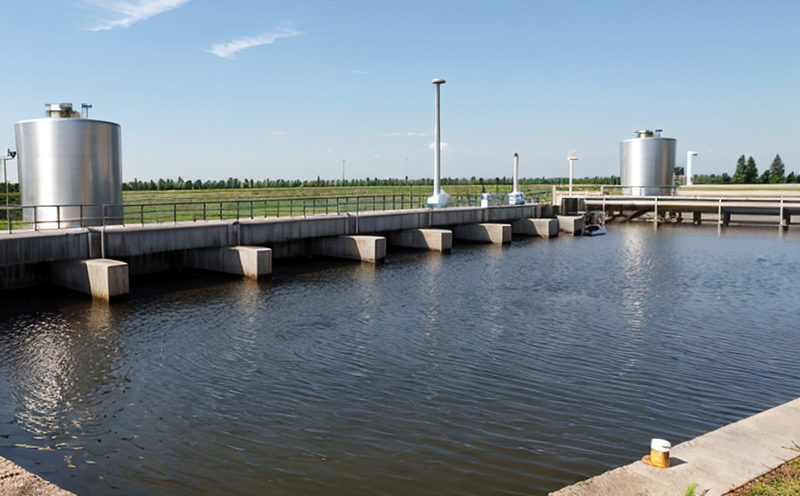EN ISO 16292 DNA-Based Microbiological Testing in Water Samples
The CEN standard, EN ISO 16292, provides a robust method for identifying and quantifying microorganisms in water samples using DNA-based testing. This approach offers several advantages over traditional culturing methods, including increased sensitivity, shorter processing times, and the ability to detect previously unculturable organisms.
The test protocol outlined by EN ISO 16292 involves a series of steps designed to isolate DNA from water samples, amplify it using polymerase chain reaction (PCR), and then analyze the resulting amplicons. This method allows for the identification of specific microorganisms down to genus or species level, depending on the primer set used in the PCR process.
Water utilities, environmental agencies, and R&D teams rely on this testing method to ensure compliance with stringent microbiological standards such as those specified by WHO, EPA, and local regulatory bodies. The ability to detect even trace amounts of contaminants is critical for maintaining public health and environmental quality.
The DNA-based testing method described in EN ISO 16292 also supports the development of advanced treatment processes by identifying potential sources of contamination or biofilm formation. This information can be invaluable for optimizing water treatment protocols and ensuring long-term sustainability.
For quality managers, compliance officers, and R&D engineers, adopting this testing method not only ensures regulatory adherence but also contributes to a deeper understanding of the microbial community in water systems. The insights gained from these tests can lead to more effective risk management strategies and innovative solutions for improving water quality.
The test process typically begins with the collection of water samples from various points within a distribution network or source water supply. These samples are then processed using specialized equipment designed to preserve the integrity of the DNA present in the microorganisms. The subsequent steps involve the extraction, purification, and amplification of microbial DNA, followed by hybridization probes that allow for species-specific detection.
The accuracy and reliability of EN ISO 16292 testing are further enhanced by rigorous quality control measures, including positive and negative controls, inter-laboratory comparisons, and proficiency testing programs. These protocols ensure consistent results across different laboratories and over time.
In conclusion, the implementation of DNA-based microbiological testing in water samples as per EN ISO 16292 provides a powerful tool for monitoring and managing microbial content in water systems. This method offers unparalleled sensitivity and specificity, making it an indispensable asset for maintaining high standards of public health and environmental protection.
Why Choose This Test
Choosing DNA-based microbiological testing as per EN ISO 16292 is a strategic decision that aligns with the evolving needs of water utilities, environmental agencies, and R&D teams. Here are several key reasons why this method should be prioritized:
The test offers enhanced sensitivity compared to traditional culturing methods, allowing for the detection of even trace amounts of microorganisms.
It significantly reduces processing times by eliminating the need for lengthy incubation periods typically required in culture-based methods.
The ability to detect unculturable organisms expands the scope of microbiological analysis, providing a more comprehensive understanding of water quality.
DNA-based testing supports the development and optimization of advanced treatment processes by identifying potential sources of contamination or biofilm formation.
For quality managers, compliance officers, R&D engineers, and procurement professionals, this method ensures regulatory compliance while contributing to a deeper understanding of microbial communities in water systems. The insights gained from these tests can lead to more effective risk management strategies and innovative solutions for improving water quality.
International Acceptance and Recognition
The DNA-based microbiological testing method described by EN ISO 16292 is widely accepted and recognized globally, with numerous countries adopting it as a standard practice in their water quality management programs.
This international recognition ensures that test results are universally comparable, facilitating collaboration between laboratories and regulatory bodies across borders.
The widespread acceptance of EN ISO 16292 is due to its rigorous methodology and the high level of confidence it provides in detecting and quantifying microorganisms. This standard has been endorsed by key organizations such as WHO, EPA, and various national standards bodies.
By adhering to this international standard, laboratories can ensure that their testing methods are up-to-date with global best practices. This alignment not only enhances the credibility of test results but also facilitates smoother international trade and collaboration.
Environmental and Sustainability Contributions
DNA-based microbiological testing, as per EN ISO 16292, plays a crucial role in environmental sustainability by providing critical data on the microbial composition of water sources. This information is essential for developing effective strategies to protect ecosystems and human health.
The ability to detect previously unculturable organisms allows for a more complete assessment of water quality, which can inform decisions about resource allocation and conservation efforts.
By identifying potential sources of contamination early on, this testing method supports the implementation of preventive measures that minimize environmental impacts. Additionally, the insights gained from these tests contribute to the development of more sustainable treatment processes, ultimately leading to a reduction in waste generation and energy consumption.
In conclusion, DNA-based microbiological testing as per EN ISO 16292 is not only a powerful tool for ensuring public health but also a vital component of environmental stewardship. By integrating this method into routine water quality monitoring programs, stakeholders can make informed decisions that promote both human and ecological well-being.





